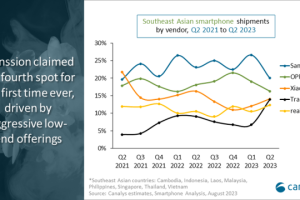Another Positive Step towards Enabling Cashless Health Benefits for All
With the belief that economy of the country is going on right track, Finance Minister Arun Jaitley presented his third Union Budget 2016-17. With an eye on increasing the healthcare structure of the country, government has increased the budgetary allocation to health insurance.
Union Minister of Health and Family Welfare, J P Nadda applauded the Union Budget unveiled by Arun Jaitley,as Nadda said “The Budget 2016-17 is visionary, forward looking and progressive as it takes care of the aspirations, aims and goals of a cross-section of masses including the rural people, farmers, young people looking out for jobs and the vulnerable and marginal sections of the society; while also being targeted to the growth and development goals of the country,”
The Health Minister also added that the nine pillars of the Union Budget covering the rural sector, social sector including health and education, financial sector and the infrastructure sector are focussed on taking the country on a growth path which is holistic and comprehensive. The outlay of infrastructure is substantial and will result in the fast growth of the various types of infrastructure which is the engine for growth for the country.
The budget allocation for health insurance for the year 2016-17 is Rs 1500 crore. A revised estimate for the current financial year shows expenditure of Rs.595 crore. This is an increase of 152% within one year for the Rashtriya Swasthya Suraksha Yojana, or National Health Protection Scheme (NHPS), a new nomenclature for the Rashtriya Swasthya Bima Yojana (RSBY). Under the NHPS, the finance minister announced a cover of Rs.1 lakh per family. An additional cover of Rs.30,000 was announced for senior citizens.
On medicines, finance minister Arun Jaitley said the centre planned to open 3,000 Jan Aushadhi stores offering affordable generic medicines. Currently, India has a total of 137 such stores in 19 states.
The overall budget allocation for fiscal 2016-17 for health, including AYUSH (Ayurveda, Yoga and Naturopathy, Unani, Siddha and Homoeopathy) is Rs.39,532.55 crore.
Commenting on the schemes and outlay for the health sector, the Health Minister noted that: “The budget has given the required impetus to the health sector and the Health Ministry is completely geared up to implement the schemes announced in the budget.” He stated the new health protection scheme will provide the much required financial cover for the family with special focus on the senior citizens who have been provided an additional top-up package up to Rs. 30,000/-. He also stated that the opening of 3,000 Jan Aushadhi stores across the country which will provide affordable medicines to the people, is a people-centric move.
Another sector that has emerged as the focus area is so-called super specialty (or tertiary care) facilities under the Pradhan Mantri Swasthya Suraksha Yojana (PMSSY), which is responsible for establishing new All India Institutes of Medical Sciences and upgrading state hospitals.
The budgetary allocation for this increased from Rs.1,215.85 crore to Rs.2,500 crore this year.
In a major initiative, the finance minister announced that dialysis units will be installed at all district hospitals for renal patients under the National Dialysis Service Programme. Jaitley proposed to raise funds for the initiative through public-private partnerships and urged private entities to step in. He proposed exemptions from customs and excise duty for dialysis equipment.
“National Dialysis Services Programme’ under which dialysis services will be provided in all district hospitals under the PPP mode will bring relief to a large section of the population. He stated that the proposal to exempt certain parts of dialysis equipment from basic customs duty, excise/CVD and SAD is a step in the right direction.” Said Nadda
Bullet Points
* Allocation for social sector including education and health care – Rs 1,51,581 crore.
* New health protection scheme will provide health cover up to Rs One lakh per family.
* For senior citizens an additional top-up package up to Rs 30,000 will be provided.
* 3,000 Stores under Prime Minister’s Jan Aushadhi Yojana will be opened during 2016-17.
* ‘National Dialysis Services Programme’ to be started under National Health Mission through PPP mode
The increase in allocation has been welcomed by experts in the health sector. Here are the excerpts
Vishal Bali, Co-founder & Chairman, Medwell Ventures“Budget 2016 once again neglects the overall development of the healthcare sector. For a sector that has an intense demand supply gap, the finance minister has given it a cursory attention. There is no fundamental change to increase public healthcare spending and give it the necessary boost towards 2% of GDP. The budget is also silent on Universal Healthcare coverage agenda which has been often discussed by the Govt. Healthcare should have been an integral part of the focus that has been given to infrastructure. The decision to provide health insurance coverage of 1lac to senior citizens of BPL families is a good move besides the step to launch a National Dialysis services program under PPP structure. The NCD epidemic in India has not been given any attention towards increased allocation. The announcement of tax holiday for startups for three of five years of setting up the company might encourage innovative healthcare firms to set up their business to usher in the much change that is likely to make healthcare sector more technology-driven. Holding fiscal deficit at 3.5% of the GDP is a good but healthcare given the miss as a national agenda.”
Dr. Amol Raut, CEO, GeneSupport “With India being at the brink of lifestyle disorder, it’s a high time that government should increase their focus on preventive healthcare technology. Indian population is youngest in the world but this very population is falling prey to hoards of lifestyle disorders with passing time. Honorable Finance Minister allocated funds for healthcare insurance which is good news but it again focused more on curative part of treatment. According to my point of view this year’s budget is not very focused on preventive healthcare technology which is a need of the hour but will have a supplementary impact on the healthcare ecosystem. The medical fraternity today is emphasizing more on the later part. Other unfavorable factor was there was no fund allocation for public healthcare and infrastructure improvement. Overall, this year’s budget was not an exceptional affair in terms of preventive healthcare, hope to see movement and revolution in the next one though.”
Pawan Gupta, Co-founder, Curofy,”The budget was very welcome for the startup ecosystem in India. From registering startup with in a day to reducing corporate tax for companies with revenue less than 5 crore, the budget spoke of achhe din for startups in India. The ecosystem needed a sentiment push and I think it got it.
I personally like the provisions of capital gains not to be taxed on investments by fund of funds for startups and lowering the long term capital gains duration from three years to two years. These measures should improves the confidence of investors. Combined with Bankruptcy laws they should work wonders for the ecosystem.
In healthcare, the government has expanded health cover by Rs. 30,000 for senior citizens and provided Rs. 1,00,000 cover to every family in the country. In a country where so many people go without proper treatment due to lack of funds, the healthcare cover extension should improve healthcare spending. There is obviously a big opportunity for startups and companies in insurance sector. Further emphasis on generic drugs through PM Jan Aushadi Yojana gives further boost to homegrown generic pharmaceuticals. But at the same time the budget was low on how healthcare infrastructure will be created and how theDoctor-Patient ratio will be improved. These are the biggest problems plaguing the industry.
Gautam Khanna, CEO – P. D. Hinduja Hospital & Medical Research Centre, “Social sector with healthcare” is one of the 9 pillars of the Union Budget 2016-17. This year’s budget has focused at few specific schemes like the National Dialysis Program and the Pradhan Mantri Jan Aushadhi Yojana. 2.2 lakh renal patients are added every year in India and the distribution of health facilities in the country is skewed. The proposed National Dialysis Program would make treatment more accessible. Likewise, 3,000 medical stores will be opened under Pradhan Mantri Jan Aushadhi Yojana to make quality medicine available.
But it is important that these schemes are executed and monitored such that the maximum benefit reaches to the patients who need them the most.
This year’s budget once again left out key areas like overall healthcare spending, National Health Mission, Universal Health Coverage, health infrastructure and primary and secondary healthcare.
The new health insurance schemes are a step to make healthcare affordable to the vulnerable sections.
Rs. 1804 cr. have been allocated for skill development. We await the details if there are plans to boost skill development in the healthcare sector (trained medical technicians etc.). Another area of concern is the reduction of benefits of deductions for research from 150% to 100% from 1st April 2020. This may impact the funding for medical research.
Overall, the Union Budget 2016-17 could have done more in terms of greater public spending in healthcare to strengthen public healthcare and build infrastructure and manpower capacity to bridge the current gaps in the sector.
Shashank ND, Founder & CEO of Practo, “The Budget is a clear indicator by the Government to bring development at the grass root level for its citizen. The Finance Minister’s focus on health as one of the key pillars proves to show that everyone should have the right to live a healthy lifestyle. The fact that quality drugs will be made available by setting up 3,000 stores in rural India along with health insurance of upto Rs. 1 lakh per family; top up of Rs. 35,000 for individuals above 60 years indicates that incentives should be made available to every Indian, irrespective of old age or income limitation. The Swachch Bharat Abhiyan, and LPG connection for women in rural homes will help in pushing the agenda preventive healthcare even further. The National Dialysis services programme is also a heartening initiative taken up by the government.
Taking a lead from Start-up India, Stand up India initiative, Mr. Modi’s government is constantly working towards creating a conducive environment to promote entrepreneurship and facilitate growth of the startup ecosystem in India. The ease of registration process and the hope to complete the task in 1 day is a welcome measure along with the 3 year Tax holiday for startups. At least this will allow a speedy way to setting up a venture and help startups to focus on the building disruptive products and services without worrying about profits or losses. It also good to see aspiring entrepreneurs to get access to quality education and training through various newly built colleges, schools, government ITI’s and vocation training centers through massive open online courses. Reduction of long term capital gains from 3 years to 2 years is a positive move by the government. With regards to the infrastructure improvement and focus on electrification of all villages will help to promote connectivity and give rural India access to internet.
Hisao Masuda, MD, Omron Healthcare India “The budget looked at the healthcare as a key area for inclusive growth, however the focus has majorly been on health cover and palliative care. On an overall level, the government has introduced measures to ease implementation and development through the PPP model, but there is a need to initiate specific partnerships to upgrade healthcare infrastructure beyond urban areas. There is a clear need to focus on preventive healthcare in order to decrease the mortality rate and disease burden of the country.”
Amol Naikawadi, Joint Managing Director, Indus Health Plus says, “The overall Union Budget 2016 has been welcoming and focused on empowerment on the bottom pyramid of the society from all aspects. Introduction of National Dialysis Service Programme is a good initiative towards the solving the healthcare issues at the district level to reduce the cost of treatment under PPP model. Also, LPG connection for women members of rural homes will help in reducing the disease burden due to Chula smoking. The increase in tax exemption limit was a positive move to encourage people to equip themselves with health insurance. The another great initiative by the government is to provide health insurance of upto Rs. 1 lakh per family; extra of Rs. 30,000 for people above 60 years (senior citizens). However no special emphasis were given to other requirements of the health care sector at large”.
Satish Reddy, Chairman, Dr. Reddy’s Laboratories, “Budget 2016 has been a mixed bag overall. The focus on infrastructure, rural development and social sector spending are important catalysts for boosting the economy’s growth rate.
On the healthcare front, the budgetary emphasis on the sector was fairly muted. While certain initiatives such as the new health insurance scheme or the National Dialysis Services program are good, perhaps a more holistic, well rounded thrust would have served the sector better in delivering good health to those in need of it.
The initial outlay of 1,000 crores to fund higher education is simply not enough, given the huge gap and growing need for students to have access to high quality education. One hopes that the government will build upon this and expand access to higher education to a much larger section of society.
The plan to set up the National Board of Skill Development in partnership with industry and academia is definitely a step in the right direction. This move will foster an environment of understanding and collaboration that will ensure skill development is mapped to industry needs, thereby creating more job opportunities in the long run.
The finance minister began his speech by articulating the 9 pillars on which his budget proposals were built, that would have a transformative impact on the economy and people. The social sector, including healthcare was in the top 5. We now look forward to a positive impact on this important aspect of India’s growth story.”
Prashant Jhaveri, Head, Products and Strategy, Medi Assist, “The Union Budget 2016 sets the tone for what we believe will redefine the future of the health benefits industry. Just as envisaged, the slew of policies aimed at ensuring financial inclusion will provide impetus to cashless benefits administration across the nation.
The new health protection scheme that offers health cover of up to INR 1 lakh per family and a top-up of INR 30,000/- for senior citizens will provide economic security through insurance policy-backed coverage, which in turn will result in cashless utilization of healthcare benefits. Health benefits administrators, with their ability to provide access to a wide network of empanelled hospitals and also manage claims in a cashless and paperless format, will be critical to the success of this scheme.
The Jan Aushadhi Yojana scheme to provide generic drugs at affordable prices is a precursor to where our nation is headed in terms of providing coverage for in-patient treatment, out-patient care as well as pharmacy benefits. TPAs will have a very significant role to play in ensuring smooth and cashless delivery of health benefits across the illness to wellness spectrum.
The National Dialysis Service program is another significant development. Apart from underlining the acute need for recurring medical care for management of chronic conditions, this also highlights the importance of prudently planning a hospitalization in advance. Patients can benefit enormously by planning an eCashless™ hospitalization that not only allows them to completely eliminate wait time during admission for a cashless treatment but also gives them full visibility into their expected cost of treatment.
Managing health benefits for a large, diverse and populous country like India is no easy task. Technology must necessarily be at the heart of any initiative to administer such significant public healthcare schemes. Biometrics-based e-cards for beneficiaries, paperless admission and claims management at network hospitals, SMS- and mobile app-based claims tracking for beneficiaries, integration with government systems for utilization tracking and MIS reporting, data analytics that empower government decision makers to derive intelligent insights from the enormous amounts of data collected from across the nation; health benefits administrators cannot reach their true potential by merely processing claims. We must morph into technology and implementation partners for the Government and take cashless benefits to the masses and service citizens in a manner befitting the country that is today one of the world’s fastest growing economies – India.
Shrikant Soman, CEO, Bhatia Hospital, “This year’s Union Budget 2016-17 has completely varied reaction for the healthcare sector. Though the new initiatives which were announced are good
but not enough to meet the current challenges that our industry is facing. The new health protection scheme announced will provide health cover of up to INR 1,00,000 per family with an additional top up of INR 30,000 for senior citizens of 60 years and above. This will provide some relief from financial stress caused due to serious illness of family members to poor and economically weak families. With opening of 3000 stores under Prime Minister’s Jan Aushadhi Yojana in 2016-17 is a welcome move towards making quality drugs readily available at an affordable prices. Starting a ‘National Dialysis Service Program’ through PPP model and exempting tax from dialysis equipment will provide an access to a huge number of patients of End Stage Renal Disease in India every year. However there was no significant take away from the budget apart from the above initiatives. The budget ignored revision of service tax in healthcare sector as we as it didn’t relook at the healthcare infrastructure fund which would have encourage healthcare entrepreneurship.”




































